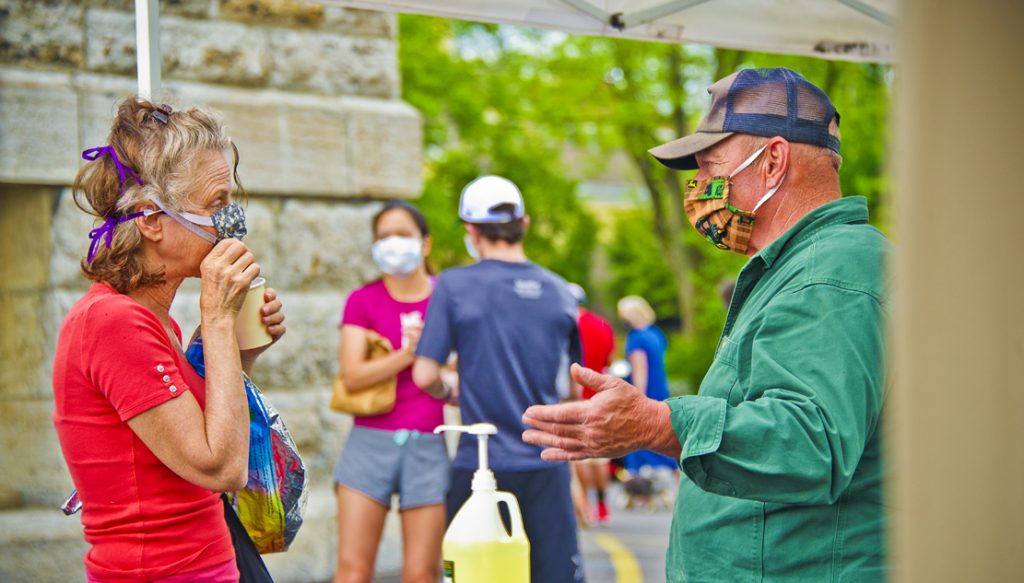
By Maurice de Hond | From Joop | Auto-tranlsated
I could imagine that until mid-March we were very afraid of the consequences of the spread of the virus. The WHO indicated that the mortality rate if you became infected was around 3%. The images from the hospitals in Bergamo were terrible. The virologists, epidemiologists and doctors on television indicated that they knew very little and warned us about the many ways we could get infected, up to and including touching coins.
That at that time there was little room for the relativizations, which I could already make by studying the international distribution patterns (such as Rome and Naples, where much less was going on than in Lombardy), I could imagine.
In mid-March I found out via Peil.nl that 43% of the Dutch thought they had a chance of becoming infected of more than 50%. Approximately one third of the Dutch were afraid that if they became infected it would be fatal for them. For the Dutch between 55 and 64 years of age it was 50% and between 65 and 80 years of age it was 60%.
A large part of the Dutch people then had, let’s call it as it is, primary fear of death. And completely understandable by the news that came to them.
Since then, more and more has become known about the virus. Which is the real mortality risk. (According to the CBS, the mortality rate in the Netherlands so far has been over 8,000. More than 5,000 of these were over 80 years old. Of the more than 500 people under the age of 65 who died, approximately 85% had underlying disorders).
In addition, we also know more and more where the virus does strike and where it does not. Outside (almost) not, through objects not, especially at superspread events, etc.
But what struck me and annoyed me a lot, was that on television we hardly or not at all hear the latest information (which could take away quite a lot of people’s fears). And that we only hear from virologists, epidemiologists and administrators that the dangers are still great, especially if we don’t stick to… and then it comes…
While the number of infected persons in the Netherlands is now virtually zero, we are expected to behave in such a way that we can be infected or infect someone else at any time.
The experts on TV do not fail to warn of a second wave (in which the viewers get the feeling that we are going back to the situation at the end of March). Even though it has now become clear several times that even if we don’t comply with the regulations outside, there will be no increase in the number of infections, this will not be raised and actually only downplayed.
But also our executives now have a range of standard mantras: “mouth protection offers false security,” “if we don’t stick to the one and a half meter distance it will go completely wrong” and the latest from this hit series “the virus is not finished with us yet.”
What people apparently don’t realize is that all those remarks have a big impact on the psyche and the behaviour of people. Especially since they have been put in a kind of state of mind in the middle of March where they see danger everywhere to die from this virus.
Every interview with Prof. Van Dissel and Prof. Wallinga shows the same pattern. A constant way of holding people hostage in their own fear, as it were.
The interview with Prof. Wallinga on Friday was a good example of this. The point was that the reproduction number was rising again. The NOS took over the news and reported “The reproduction number is growing … slowly above 1.”
Not only is that figure still under 1, but also realise that there are now only 1% of hospital admissions from the end of March. And that in the case of very small numbers based on coincidence alone, it may be that the reproduction factor exceeds 1. If there are only 10 infected persons left and they infect 11 together, then that factor is higher than 1.
What the doctors, administrators and editors of programs like Op1 apparently do not recognize is that they keep many people unnecessarily in suspense because of this. That is bad for their condition, that is bad for our society, that is bad for public health and that is bad for the economy. As a result, people are in too much tension and don’t do a number of things that would be good for their health and also good for the economy. But certainly also for public health.
To show the experts, the administrators and certainly the media the disastrous effects of their actions, last weekend I found out from Peil.nl how big a chance they think the virus will kill them if they get infected. And I have shown this in a table by age group. This table shows what the actual chances of dying if you become infected are based on the actual figures at the moment.
Here you can see how much higher the Dutch estimate their risk of dying from an infection than it really is (apart from the chance of being infected at all).
The Dutch under the age of 45 estimate this risk to be more than 425 times higher. For people between 55 and 64 years that is a factor of 65. And for Dutch people between 65 and 80 years that is 15.
How big do you think the damage (in all kinds of areas) is that the Dutch assess their risks so badly?
Isn’t it about time that all those involved (i.e. doctors, administrators and the media) gave the Dutch a realistic picture of what the danger of this virus is? Instead of constantly stirring up fear. As a result of which a lot of unnecessary damage will be done.




1 thought on “Isn’t it about time that doctors, administrators and media give the Dutch a real picture of the danger of this virus?”